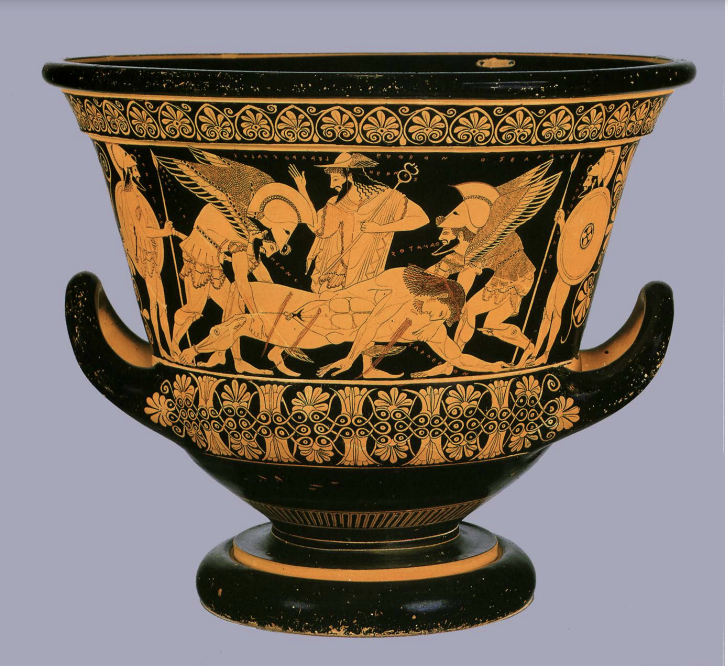Ancient Greek Art
Western vs. Non-Western: When we say Western, we mean inspired or influenced by Ancient Greece.
Broadly, Ancient Greece was the first to philosophically analyze beauty and aesthetics; that is, what makes something beautiful, and what is beauty?
Calyx Crater - Red Figure Style*
 Painted by Euphronios and potted by Euxitheos
Painted by Euphronios and potted by Euxitheos
Use: Wine used to be mixed with water to purify the water; it was in one of these craters that that process happened.
What it depicts: A battle scene of the Trojan War; The Death of Sarpedon Background: Patroclos killed Sarpedon. Zeus is hesitant to let Sarpedon die, but the other gods convinced him to let nature take its course.
Sarpedon: a son of Zeus; a general from Lycia who fought with the Trojans
Patroclos: friend of Achilles; a soldier who fought with the Greeks
Glaucus: cousin of Sarpedon; fighting for Troy
*JOVE aka ZEUS (Roman vs. Greek name)
After he died, Zeus asked Dream and Sleep (spiritual entities) to take him back to Lycia to be buried. This scene is the one featured on the crater.
Hypnos: god of sleep
Thanatos: god of death
Hermes: messenger god
and Sarpedon
The writing on the vase:
There was writing all over this vase.
Sometimes R→L, sometimes L→R.
There was a signature as well—this idea of taking credit for one’s work was quite modern.
“Leagros Kalos:” Leagros is beautiful (random writing on the vase—Leagros was thought to be the most beautiful man of Greece.
The history of the object itself:
It was traded to Italy and brought with someone in their tomb.
Tomb-raiders found it.
The papers for it were “fudged,” and it was sold to the MET.
The Italian government sued to get it back and they won.
NOTE: We call the way that some of the drawings on the crater are one line a contour/contour drawing.
NOTE: Nude vs. Naked—much of Ancient Greek art depicts nude human bodies, including this crater. The term nude implies that the human body is beautiful, and it is the one we use when discussing such art—not naked.*A style with red figures.